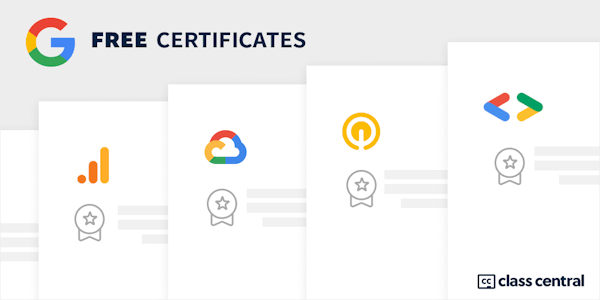Overview
In this course -- through a combination of video lectures, demonstrations, and hands-on practice -- you’ll learn about the main components of an operating system and how to perform critical tasks like managing software and users, and configuring hardware.
By the end of this course you’ll be able to:
● navigate the Windows and Linux filesystems using a graphical user interface and command line interpreter
● set up users, groups, and permissions for account access
● install, configure, and remove software on the Windows and Linux operating systems
● configure disk partitions and filesystems
● understand how system processes work and how to manage them
● work with system logs and remote connection tools
● utilize operating system knowledge to troubleshoot common issues in an IT Support Specialist role
Syllabus
- Navigating the System
- Welcome to the Operating Systems course of the IT Support Professional Certificate! In the first module of this course, we will cover the basics of Windows and Linux operating systems (OS). We will learn about how directories and files work in Windows and Linux OS. You will also learn practical ways to manipulate files and directories in the Windows graphical user interface (GUI), Windows command line interface (CLI), and Linux shell. By the end of this module, you will interact with files and directories and perform basic text manipulation in Windows and Linux OS.
- Users and Permissions
- In the second module of this course, we'll learn about configuring users and permissions in Windows and Linux OS. As an IT Support Specialist, it's important to know how to grant the appropriate permissions to users and groups for both Windows and Linux OS. By the end of this module, you will know how to add, modify, and remove users for a computer and for specific files and folders by using the Windows GUI, Windows CLI, and Linux shell.
- Package and Software Management
- In the third module of this course, we'll learn about package and software management in Windows and Linux OS. It's important to know how package installs work and how devices and drivers are managed within these operating systems. We will also learn about different packaging and file compression methods. By the end of this module, you will know how to create, update, and remove software by using the Windows GUI, Windows CLI and Linux shell.
- Filesystems
- In the fourth module of this course, we'll learn about how filesystems work for Windows and Linux OS. We'll learn about filesystem types and why they're different for certain OS. We'll learn about disk partitioning and virtual memory and why these are so important for an IT Support Specialist's role. We'll also cover ways mount and unmount filesystems, read disk usage, and repair filesystems. By the end of this module, you will partition and format a disk drive yourself in both Windows and Linux.
- Process Management
- In the fifth module of this course, we'll explore process management. As an IT Support Specialist, it is important to use system tools to read and understand process statuses of machines. We will cover ways to start and terminate a process in Windows and Linux. We will also apply troubleshooting tools to solve problems with processes and resources. By the end of this module, you will use Windows and Linux commands to do practical process maintenance.
- Operating Systems in Practice
- Congratulations, you've made it to the final module in the course! In the last module of this course, we will cover some of the practical aspects of operating systems that you'll use all the time in IT Support. We will cover remote access and how to troubleshoot a computer from afar. We'll explore virtualization tools to manage and remove virtual instances, use logs for system monitoring, and show you a few different techniques for OS deployment. By the end of this module, you will apply all the skills from this course to debug some issues within Windows and Linux OS. Good luck!
Taught by
Reviews
2.7 rating, based on 3 Class Central reviews
4.7 rating at Coursera based on 28202 ratings
Showing Class Central Sort
-
Teacher is good. The labs are terrible! There are Qwik labs where you have to access a Windows Virtual Machine with Google Chrome RDP. Most of the time RDP doesn't load. So you'll spend about 20 minutes logging off and logging on going back and fort…
-
It is a very rich and informative course with a lot of useful commands and computers tricks demonstrated. However, the use of virtual machines can be introduced earlier.
-
I learned quite a bit about Powershell and Bash, but because of the sheer volume of information that exists, the course was necessarily sort of random about what was taught. It would benefit from being expanded into a specialization instead of just a single course, I think.







